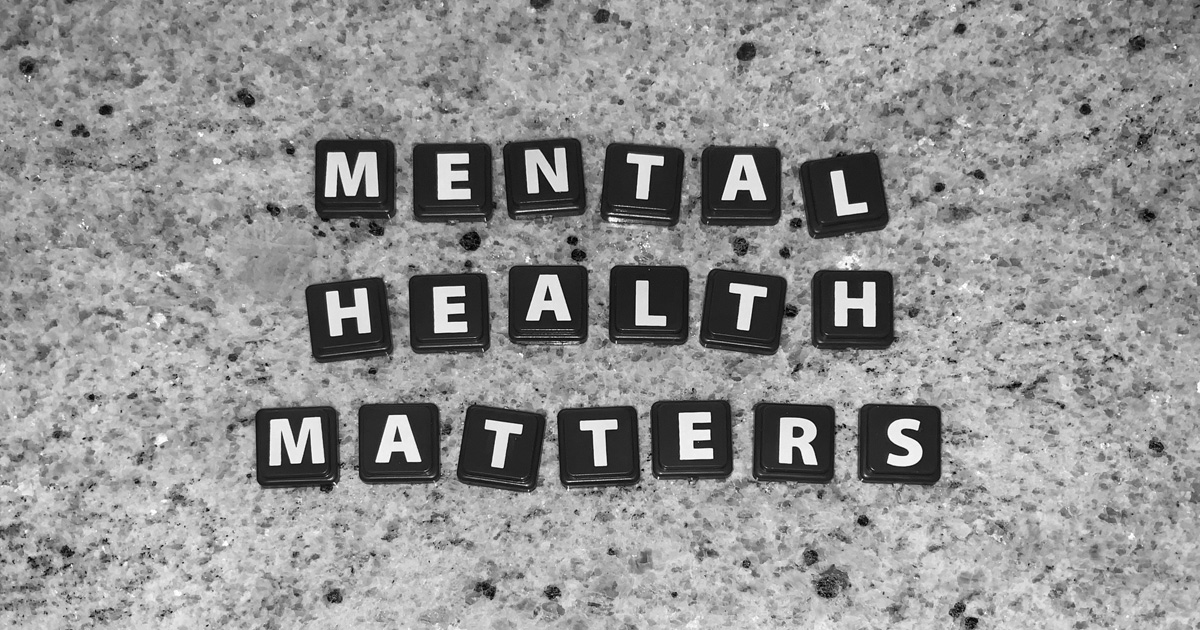
Back to Basics: Tips For Getting Your Health Back on Track
The growing prevalence of chronic disease in the U.S. is staggering. Chronic disease is becoming the new norm, with 51.8% of U.S. adults living with at least one chronic condition and 27.2% with multiple chronic conditions (3). Some experts suggest this rise in chronic disease is due to a mismatch between human biology’s innate interdependence with nature and the disconnect brought on by our modern world.
Convenience and Our Standard American Diet
While technological advances such as self-driving cars and grocery delivery apps have certainly provided convenience in our fast-paced lifestyle, there is no denying their contribution to an overall decline in our health. To truly thrive, it is essential to take a step back from our modern lifestyle and reapply the ancestral practices innate to our existence. Although our needs may seem complex and ever-changing, they are still as simple as they have always been – eat nutritious food, reduce toxins, move daily, prioritize connections with others, and sleep deeply.
As we begin to consider implementing ancestral practices for health, making better food choices is critical. Every time we make a food choice, we are presented with an opportunity to create health or promote disease. Unfortunately, the foods that make up most of our Standard American diet and that are most readily available to use are the same foods that promote disease. Let’s face it – our modern world does not make it easy to eat healthy. But if we can take a step back and aim for foods close to the form we would find them in nature, optimizing our diet is more doable than it seems.
Focus on Whole Foods
The key to a health-promoting diet is consistent consumption of real, whole (mostly) plant and (some) animal foods in the absence of processed and packaged foods. Fruits and vegetables are not only nutrient-rich, but they also contain bioactive compounds (called polyphenols) that modulate our health for the better (5). And quality-raised meat provides vitamins, minerals, and the most bioavailable amino acids (the building blocks of our essential daily protein intake) (1). Conversely, processed foods are void of nutrients and chock full of harmful additives (such as preservatives, dyes, and low-quality processed ingredients like high fructose corn syrup and industrial seed oils) that degrade health. Making healthy food choices becomes much easier when we focus on whole foods and emphasize plants. Combining these simple yet forgotten details will encourage nutrient-dense food choices with ease.
Know Where Your Food Comes From
In addition to a whole foods approach, it is also paramount to consider food sourcing and growing techniques. Our industrial food system drives modern agricultural practices, cultivating food laden with pesticides, herbicides, hormones, antibiotics, and other harmful chemicals. And unfortunately, it doesn’t stop with the food we eat. From the use of everyday personal and home care products to storage in plastic containers and exposure to contaminated water and air, our toxic burden is more significant than ever. These toxins harm our health at a cellular level (9). If our cells can’t function properly, neither will we. To reduce toxin exposure, choose organic produce whenever possible, pick glass over plastic, do your best to consume filtered water, and create mindfulness around your everyday personal and home care products (EWG.org is a great place to start).
Move Your Body
Beyond nutrient-dense food and toxin reduction, movement is also vital for health. Humans evolved to be physically active throughout life, with dependence on various activities such as stability, strength, endurance, and high-intensity exercises (7). A well-balanced approach to physical activity helps maintain lean muscle mass, preserve insulin sensitivity, and promote cellular “housekeeping” or remove damaged cells (8, 13). In addition to engaging in formal exercise, getting back to incorporating a variety of movements into our daily routine is essential.
Find Community and a Sense of Belonging
In the same way that daily movement is essential, our relationships also influence our health. Recent research suggests loneliness poses the same cardiovascular risk as smoking 15 cigarettes a day!
Assessing our connections to ourselves and others is critical for preventing disease. Following a more ancestral way of living involves being part of a community and not limiting our resources to a single-family home. A sense of belonging and dependability on others relieves stress. These connections distribute responsibilities amongst many and allow more time to relax, thereby reducing stress (6). Take time away from social media and connect in person with friends and family or seek out groups and events with like-minded people who share core values and interests. Harnessing these relationships will create a sense of belonging, purpose, and promote wellness throughout life.
Prioritize Restorative Sleep
Lastly, we cannot harness the benefits of ancestral living without prioritizing rest and sleep. Today, we commonly associate downtime with browsing the internet or late-night snacking without realizing the negative impact of these habits on our health. Unfortunately, these behaviors interrupt the quality of sleep that we require to thrive.
The consequences of poor sleep range from both behavior and physiological changes that can affect overall health. Sleep is the time reserved for recovery, ensures robust immune function, muscle growth, and repair, and is the primer for consistent energy the next day (Schmitt et al., 2018. Besedovsky et al., 2019). Artificial blue light generated by our technology can be very disruptive to our circadian rhythm, the internal process that regulates our sleep-wake cycle, amongst other physiological processes in the body.
In addition to late-night exposure to electronics, meal timing, heavy exercise, and stressful conversation or work close to bedtime is associated with detrimental changes in sleep quality and further disrupts the natural circadian rhythm of our cells (8, 2). To enhance sleep, start by eliminating blue light at night, consume your last meal at least three hours before sleep, and focus on keeping a consistent bedtime routine, aiming to achieve roughly the same bedtime and wake-time every day. These simple tweaks will support the natural signals of rest, repair, and restoration we hope to achieve from sleep daily.
Progress Comes With a Lifestyle Shift
While these practices may seem like common sense, in our modern world today, they are all too often under prioritized. We can easily refocus our efforts on any of the above-mentioned habits with little to no extra cost. Returning to a whole foods approach to nutrition and being cognizant of our environmental toxin exposure ensures we have the nutrients our body needs instead of the harmful chemicals it does not. Implementing various types of movement daily, connecting with those who matter most, and prioritizing quality sleep habits all inch us closer to the health-promoting lifestyle we are striving for.
WellStyles’ Get Back to Basics Challenge
If you are a member of WellStyles, join our Get Back to Basics challenge from September 13th -24th on WellStyles to track your progress towards these healthy habits! Track at least 6 days out of the 12 days you prioritize exercise, healthy food choices, and adequate sleep to earn an additional 200 WellStyles points to your program! Consider starting small or with one specific area and watch how your health dramatically improves.
If you’d like to learn more about VSMG’s WellStyles program, let’s chat! If you are a member of WellStyles but haven’t logged in yet, Click here to join!
References
1 – Berrazaga I, Micard V, Gueugneau M, Walrand S. The Role of the Anabolic Properties of Plant- versus Animal-Based Protein Sources in Supporting Muscle Mass Maintenance: A Critical Review. Nutrients. 2019;11(8):1825.
2 – Besedovsky, L., Lange, T., & Haack, M. (2019). The sleep-immune crosstalk in health and disease. Physiological reviews.
3 – Boersma, P., Black, L. I., & Ward, B. W. (2020). Peer reviewed: prevalence of multiple chronic conditions among US adults, 2018. Preventing Chronic Disease, 17.
4 – Chung, N., Bin, Y. S., Cistulli, P. A., & Chow, C. M. (2020). Does the Proximity of Meals to Bedtime Influence the Sleep of Young Adults? A Cross-Sectional Survey of University Students. International journal of environmental research and public health, 17(8), 2677. https://doi.org/10.3390/ijerph17082677
5 – Fraga, C. G., , Croft, K. D., , Kennedy, D. O., , & Tomás-Barberán, F. A., (2019). The effects of polyphenols and other bioactives on human health. Food & function, 10(2), 514–528. https://doi-org.uws.idm.oclc.org/10.1039/c8fo01997e
6 – Holt-Lunstad, J., Smith, T. B., & Layton, J. B. (2010). Social relationships and mortality risk: a meta-analytic review. PLoS medicine, 7(7), e1000316. https://doi.org/10.1371/journal.pmed.1000316
7 – Lieberman D. E. (2015). Is Exercise Really Medicine? An Evolutionary Perspective. Current sports medicine reports, 14(4), 313–319. https://doi-org.uws.idm.oclc.org/10.1249/JSR.0000000000000168
8 – Sampath Kumar, A., Maiya, A. G., Shastry, B. A., Vaishali, K., Ravishankar, N., Hazari, A., Gundmi, S., & Jadhav, R. (2019). Exercise and insulin resistance in type 2 diabetes mellitus: A systematic review and meta-analysis. Annals of physical and rehabilitation medicine, 62(2), 98–103. https://doi-org.uws.idm.oclc.org/10.1016/j.rehab.2018.11.001
9 – Sanderson J. T. (2006). The steroid hormone biosynthesis pathway as a target for endocrine-disrupting chemicals. Toxicological sciences : an official journal of the Society of Toxicology, 94(1), 3–21. https://doi-org.uws.idm.oclc.org/10.1093/toxsci/kfl051
10 – Schmitt, K., Grimm, A., Dallmann, R., Oettinghaus, B., Restelli, L. M., Witzig, M., … & Eckert, A. (2018). Circadian control of DRP1 activity regulates mitochondrial dynamics and bioenergetics. Cell metabolism, 27(3), 657-666.
11 – Wehrens, S., Christou, S., Isherwood, C., Middleton, B., Gibbs, M. A., Archer, S. N., Skene, D. J., & Johnston, J. D. (2017). Meal Timing Regulates the Human Circadian System. Current biology : CB, 27(12), 1768–1775.e3. https://doi.org/10.1016/j.cub.2017.04.059
12 – West, K. E., Jablonski, M. R., Warfield, B., Cecil, K. S., James, M., Ayers, M. A., Maida, J., Bowen, C., Sliney, D. H., Rollag, M. D., Hanifin, J. P., & Brainard, G. C. (2011). Blue light from light-emitting diodes elicits a dose-dependent suppression of melatonin in humans. Journal of applied physiology (Bethesda, Md. : 1985), 110(3), 619–626. https://doi-org.uws.idm.oclc.org/10.1152/japplphysiol.01413.2009
13 – Wu, N. N., Tian, H., Chen, P., Wang, D., Ren, J., & Zhang, Y. (2019). Physical Exercise and Selective Autophagy: Benefit and Risk on Cardiovascular Health. Cells, 8(11), 1436. https://doi-org.uws.idm.oclc.org/10.3390/cells8111436



